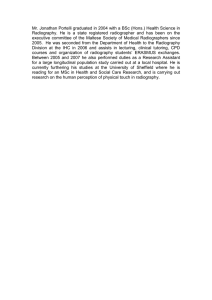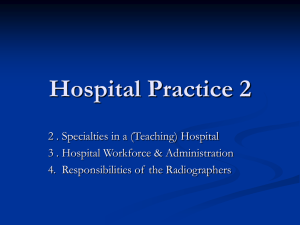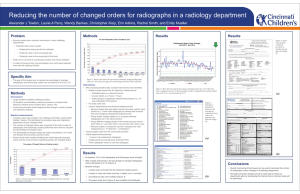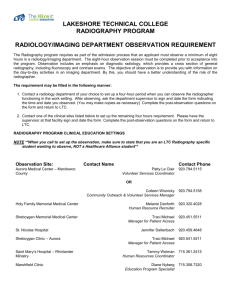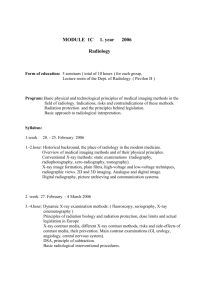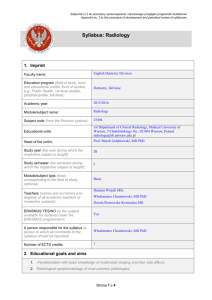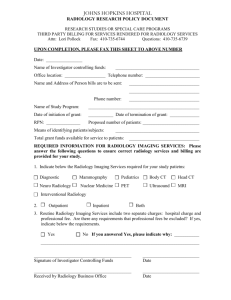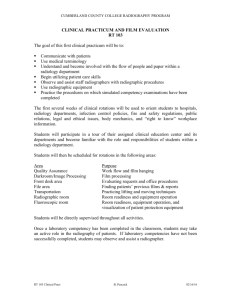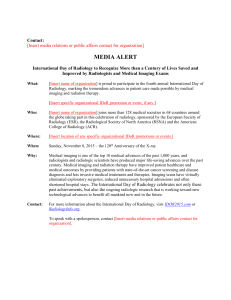ABSTRACT Introduction: Since the discovery of X
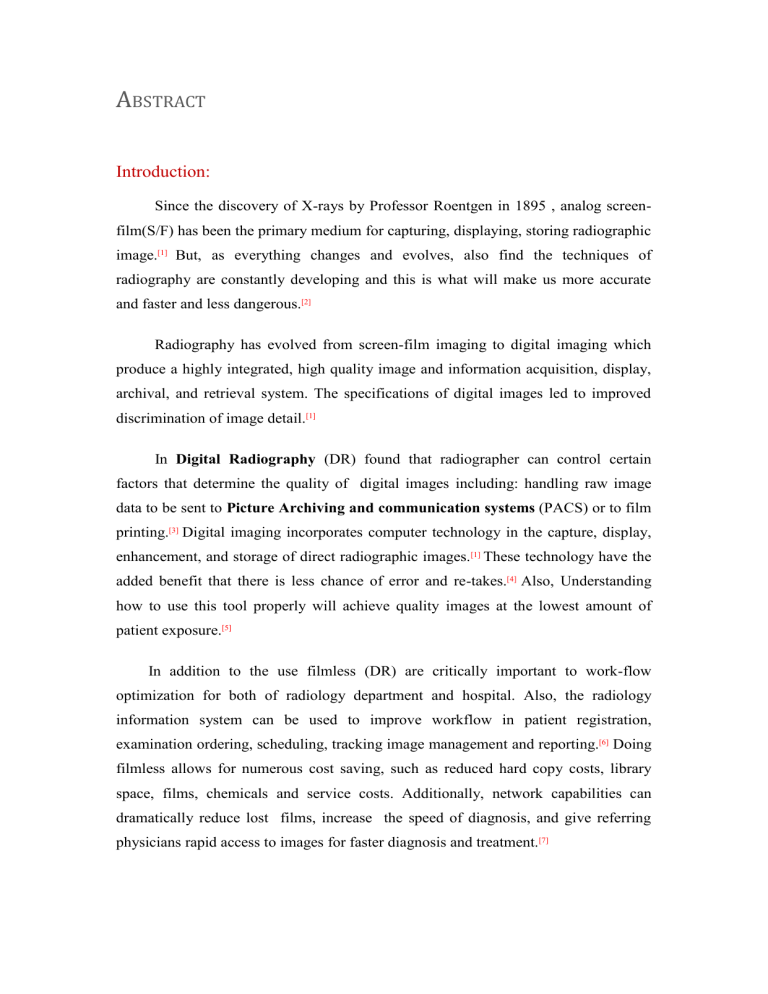
A
BSTRACT
Introduction:
Since the discovery of X-rays by Professor Roentgen in 1895 , analog screen- film(S/F) has been the primary medium for capturing, displaying, storing radiographic image.
[1] But, as everything changes and evolves, also find the techniques of radiography are constantly developing and this is what will make us more accurate and faster and less dangerous.
[2]
Radiography has evolved from screen-film imaging to digital imaging which produce a highly integrated, high quality image and information acquisition, display, archival, and retrieval system. The specifications of digital images led to improved discrimination of image detail.
[1]
In Digital Radiography (DR) found that radiographer can control certain factors that determine the quality of digital images including: handling raw image data to be sent to Picture Archiving and communication systems (PACS) or to film printing.
[3] Digital imaging incorporates computer technology in the capture, display, enhancement, and storage of direct radiographic images.
[1] These technology have the added benefit that there is less chance of error and re-takes.
[4] Also, Understanding how to use this tool properly will achieve quality images at the lowest amount of patient exposure.
[5]
In addition to the use filmless (DR) are critically important to work-flow optimization for both of radiology department and hospital. Also, the radiology information system can be used to improve workflow in patient registration, examination ordering, scheduling, tracking image management and reporting.
[6] Doing filmless allows for numerous cost saving, such as reduced hard copy costs, library space, films, chemicals and service costs. Additionally, network capabilities can dramatically reduce lost films, increase the speed of diagnosis, and give referring physicians rapid access to images for faster diagnosis and treatment.
[7]
Objective:
The aim of this study is to compare digital radiography and conventional radiography as regards diagnostic performance, image enhancements, productivity as well as improved patient care and patient satisfaction.
Materials and Methods:
A cross sectional questionnaire survey was carried out in radiology department in different hospitals and clinics in Jeddah and Makkah cities . The study included one hundred radiographers participated in this study. The radiographers were divided into three groups (Technicians which have diploma, Technologists which have B.Sc degree) and other personal. Who work in the Radiology Department such as the graduates of the medical physics department or the radiologists.
This study relied on questionnaires filled by the staff in radiology department. The questionnaire composed of 8 questions, having a combination of Yes or No and multiple choice answers .
Data collected duration one month from 4/3 /2009 to 15/ 4/2009. Then statistical analyzed was done by SPSS program .The following information's were evaluated in the questionnaire and discussed.
Conclusion:
From the data demonstrated in this study, we can conclude that the presence of
DR or computed radiography in any radiology department has improved the department and hospital efficiency through:
Reduction of the volume of hazardous waste and the cost of disposal.
Elimination of the use, storage, and disposal of the hazardous photographic chemicals associated with film processing.
Provision of a healthier work environment.
Allowing for the electronic storage, easy retrieval, enhancement, and transfer of images.
Compensation for either over or underexposure using automatic density controls.
Expansion of the viewable density range by three to four times over conventional film.
Data Management, Archiving , Networking Electronic Sharing.
Easy Accessibility.
In conclusion, digital radiology has great advantages for imaging and patient dose management. However, it also has some disadvantaged e.g. if any component of the system falls down, it will lead to much delay in the work flow of the hospital and reduces its productivity and efficiency. Also depending on computed technology only may lead of decrease creativity and work experience of the radiographers.
